Being A Material Girl – Not I
BEING A MATERIAL GIRL – NOT I (ISSUE 152) OCTOBER 28, 2014
By Diane Gold
Being a material girl – not I. Some may say it’s because I don’t have a security blanket to fall back on that I say this and that if I did, I would think differently. But, this is how I see it.
MATERIAL POSSESSIONS
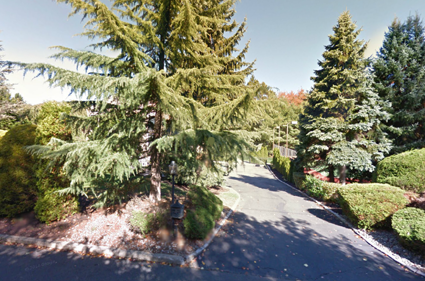 When Madonna’s song, Material Girl, came out, I was already living in a nice sized cedar house with enough land to add lush landscaping, a tennis court and a swimming pool. I had a great husband who provided for me famously, had a one month old and offered music education and music therapy to wonderful students.
When Madonna’s song, Material Girl, came out, I was already living in a nice sized cedar house with enough land to add lush landscaping, a tennis court and a swimming pool. I had a great husband who provided for me famously, had a one month old and offered music education and music therapy to wonderful students.
I am the first to say it’s great to have a big house, my own laundry room and someone who lives in to do my laundry, rather than a shared laundry room 10 feet outside my apartment, that I share with 8 very respectful fellow apartment dwellers to which I travel with my vegan baby wipes to clean off each laundry machine before use.
I enjoyed being able to choose mostly specimen trees rather than listen to the standard recommendations of my NY landscapers to pick one or two fancy trees as a point of focus. My land, my money, I figured. Now, the trees I planted are 30 years old, I have 2 children, my husband has passed and I live in an apartment.
I’m the first to say it’s not difficult to use an exorbitant allowance for art, toys, home improvements, collectibles, instruments, food, trinkets. I’m leaving out boutique clothing since my husband used to pick out our clothes.
MONEY IS NOT IMPORTANT UNTIL …
If you know me well, I am famous for saying,
“Money is not important until you need it and don’t have enough.”
I think it’s important for each of us to be productive in this world, to provide some new strategy, concept, philosophy, path or inspiration for others. Or maybe I think that because that is how I’m able to live. I like simple clothing, living down the block from the ocean, working on my own terms, I love my children and cherish any time I can see them or speak with them. I love my tai chi, fitness and meditation teaching, the coaching I do, the writing I do. Other work I do is ethical, part-time, kind of fun and allows me the supreme privilege of working on my own, when I want, where I want, at what I want.
WHAT I HAVE AND DO NOT HAVE
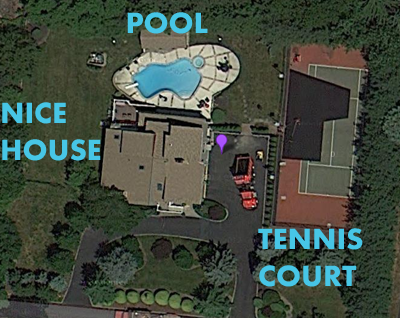
Let’s go back to being materialistic. Here are the things I do not have, physically: a tennis court, a pool, a large residence, a fancy car, a pretty bicycle, a lot of extra spending money, an airplane, a piano. The plane would be nice so I could visit the kids whenever. And my late ex-, who is with me in a big way, could not be any closer if I had more money.
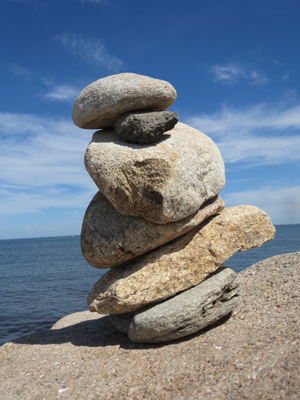 Now let’s look at the things I have that nourish my spirit: my kids; my late ex- in my heart; friends; an adequate supply of organic/vegan/non-genetically modified food and super foods; a friendly and tropical place to live that is so close to the ocean I can smell the salt; knowledge of movement so I can move my organs around; knowledge of meditation and martial arts so I can rejuvenate myself and others continually; a lifetime of memories upon which I can soak up and enjoy as long as I have my memory; a great amount of health and happiness; health insurance; opportunities to dance, read, philosophize, create, listen to and play music and converse; my freedom.
Now let’s look at the things I have that nourish my spirit: my kids; my late ex- in my heart; friends; an adequate supply of organic/vegan/non-genetically modified food and super foods; a friendly and tropical place to live that is so close to the ocean I can smell the salt; knowledge of movement so I can move my organs around; knowledge of meditation and martial arts so I can rejuvenate myself and others continually; a lifetime of memories upon which I can soak up and enjoy as long as I have my memory; a great amount of health and happiness; health insurance; opportunities to dance, read, philosophize, create, listen to and play music and converse; my freedom.
 When my good friend said to me, you are living in a tiny apartment and don’t have money for extra goodies; it led me to consider the material girl aspect. Although I have to plan when I go on vacation or the size of my car or residence; I have freedom with which to be creative and in which to experience my life. Within this freedom, I get to facilitate others. How cool is that!
When my good friend said to me, you are living in a tiny apartment and don’t have money for extra goodies; it led me to consider the material girl aspect. Although I have to plan when I go on vacation or the size of my car or residence; I have freedom with which to be creative and in which to experience my life. Within this freedom, I get to facilitate others. How cool is that!
SLAVERY VS. FREEDOM
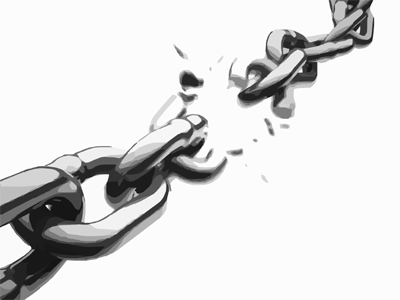 Can we say that we are free? When I had a big house with 2 living rooms, each with 25 foot skylights, was I free? Or did I have the burden of knowing my husband had to work massive hours in order to pay for the affluent lifestyle? And the burden of knowing my personal salary did not match my lifestyle.
Can we say that we are free? When I had a big house with 2 living rooms, each with 25 foot skylights, was I free? Or did I have the burden of knowing my husband had to work massive hours in order to pay for the affluent lifestyle? And the burden of knowing my personal salary did not match my lifestyle.
When I taught music in school, was I a slave to the job? People refer to the teacher’s 6-7 hour work schedule as not being a real job and always mention that we have summers off. We need the summers to cultivate back the energy we have used during the school year; the responsibility we have to be in attendance for the students is big (especially when special needs kids depend on us so), and we often use home time to develop lesson plans for our classes.
What if we are CEOs, are we not always re-purposing infrastructure?; always cultivating the next best company to absorb?; having the responsibility of managing thousands of employees? Being in charge may seem luxurious, but we are also, in some way, responsible for the lower spectrum of our employees who live their lives in poverty. Is this not being a slave to the job?
There are lots of CEOs and teachers who are content to focus on the positive influence they have over many lives. This is great. Yet, the positions themselves are part of a hierarchical system where our employment destiny is controlled by a master, outside ourselves, similar to the way of the slave. Not a way that I like to live.
CONCLUSION
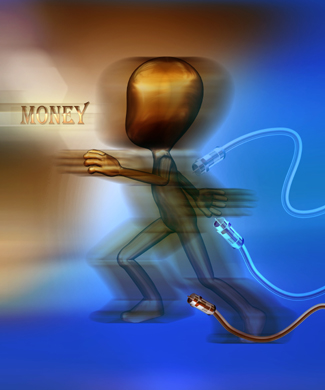
Can we say that we are free? When I had a big house with 2 living rooms, each with 25 foot skylights, was I free? Or did I have the burden of knowing my husband had to work massive hours in order to pay for the affluent lifestyle? And the burden of knowing my personal salary did not match my lifestyle.
 When we decide on the path of simplicity and freedom where we can be creative on our own time without being enslaved, we do take on the independent role, outside the hierarchical system, to get our money. When we choose this freedom path, we tend to live within our means, even when we make a lot of money, and the frills and baubles are more important than the freedom.
When we decide on the path of simplicity and freedom where we can be creative on our own time without being enslaved, we do take on the independent role, outside the hierarchical system, to get our money. When we choose this freedom path, we tend to live within our means, even when we make a lot of money, and the frills and baubles are more important than the freedom.
Being a material girl – not I, but I would love to know about you.
ACTION STEPS
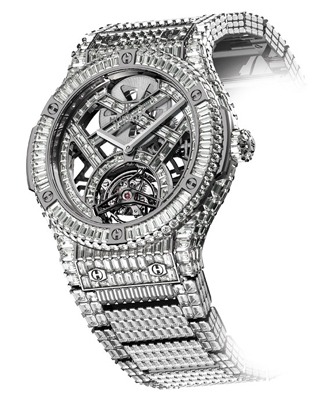 1) EVALUATE by making a quick list of what you have and what you don’t have, based on you and no one else. (Meaning, if you don’t have a dog but would never want a dog, leave it out. If you don’t have a Hublot Classic Fusion Haute Joaillerie but having a one million dollar watch is not important to your life, leave it out.)
1) EVALUATE by making a quick list of what you have and what you don’t have, based on you and no one else. (Meaning, if you don’t have a dog but would never want a dog, leave it out. If you don’t have a Hublot Classic Fusion Haute Joaillerie but having a one million dollar watch is not important to your life, leave it out.)
2) DECIDE whether you prefer the material life which means money and being a slave to it or a life of freedom and simplicity which can afford you riches and money.
 3) ACT upon your decision, whether you love money or the simple life, by taking an extra 30 to 60 minutes per day to create a new money strategy that facilitates your immediate freedom.
3) ACT upon your decision, whether you love money or the simple life, by taking an extra 30 to 60 minutes per day to create a new money strategy that facilitates your immediate freedom.
![]()
If you wish to share your story, please hit reply in your email program to be contacted.
If you need habit help, go to http://warriorsofweight.com/warriorsofweight-consulting.
![]()
FEEDBACK
We value your feedback very much.
Please leave a comment below.
Please LIKE us on the website and at
WarriorsOfWeight on Facebook.
You can also follow us on Twitter @warriorsoweight.
Thanks.
![]()
DIANE GOLD, PUBLISHER AND AUTHOR
Diane Gold, Founder of Warriors of Weight, Turning Habits Into Health, is a mentor in tai chi, kung fu and meditation, a music, fitness and stress expert, dedicated mom, studying plant-based nutrition, peaceful conflict resolution and habit replacement.
Aside from the family and friends in her life, she appreciates her freedom. She says,
“Material objects are fun. They can even be exhilarating. But most of them aren’t necessary. Of course, to be able to build a hospital, a school, supply musical instruments for children’s programs are all wonderful things to be able to do.
“But, to live a life of freedom is the right way for me. This freedom life does not mean I am not helping others. It does not mean I am living only for me. It does mean my work is not maneuvered by others and cannot be taken away by merger or acquisition.
“If I touch someone through my writing, I’m ecstatic. If I help someone through my coaching, that what it’s all about. If someone learns something through my interviews, that’s good. These don’t require, as George Carlin would have said, ‘more stuff.’ My lifestyle actually requires less stuff.
“I am fortunate in so many ways because I am simplifying my life. I am grateful for my good fortune, which doesn’t mean being a material girl. But, that’s just my way of doing it, and, so far, it works for me.
“Finally, let us all take good care of ourselves because we are so worth it!”![]()

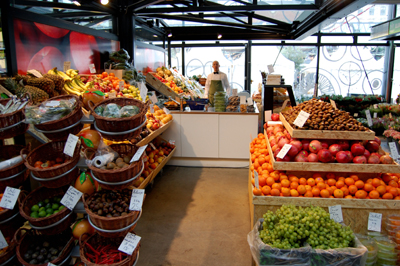
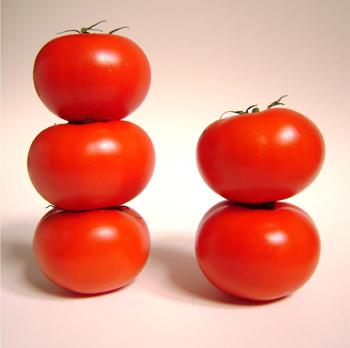 When we went to buy tomatoes, we never thought about why they were shiny. We just thought they came that way. To this day, most people don’t know that most produce, including that which is certified organic, is sent to the finishing plant after the grower and before the retailer. It gets packaged for resale using lots of different questionably safe plastics. Plus, it often gets a coating that keeps the moisture in that we commonly refer to as vegetable or fruit wax.
When we went to buy tomatoes, we never thought about why they were shiny. We just thought they came that way. To this day, most people don’t know that most produce, including that which is certified organic, is sent to the finishing plant after the grower and before the retailer. It gets packaged for resale using lots of different questionably safe plastics. Plus, it often gets a coating that keeps the moisture in that we commonly refer to as vegetable or fruit wax.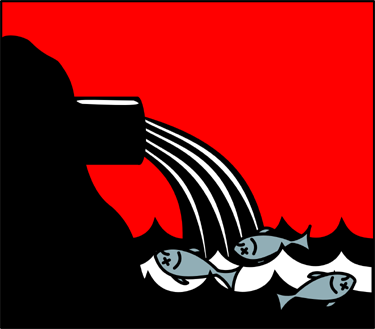 The Food and Drug Administration is responsible for the safety of food and drugs. Unfortunately, they are given information by industry giants aka Big Food, that may force them to allow certain chemical processes whose studies were not extensive enough to show the long-term risks. The FDA cares about protecting us from pathogens, like clostridium botulinum. Big Food & Chemical companies show them expensive studies where such and such a product, be it plastic wrapping or modification of the air used in packaging and storing or transporting, are safe for the consumer; the FDA approves this “finishing” process because they have seen the studies. Too bad the studies don’t go far enough.
The Food and Drug Administration is responsible for the safety of food and drugs. Unfortunately, they are given information by industry giants aka Big Food, that may force them to allow certain chemical processes whose studies were not extensive enough to show the long-term risks. The FDA cares about protecting us from pathogens, like clostridium botulinum. Big Food & Chemical companies show them expensive studies where such and such a product, be it plastic wrapping or modification of the air used in packaging and storing or transporting, are safe for the consumer; the FDA approves this “finishing” process because they have seen the studies. Too bad the studies don’t go far enough.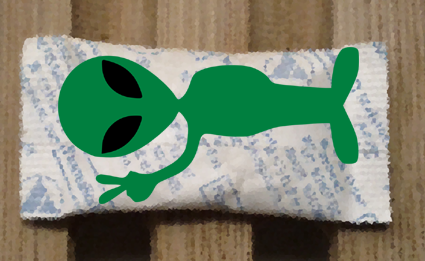 We know that in some of our bags, even in the super food bags with my maca or my cacao, there are little bags of alien origin in them to absorb moisture. Why isn’t the contents of this desiccant made known to us? We have heard it’s made of silicon which is supposed to be food safe, according to the current research, but what about the covering? How many sets of fingers have been on that little bag, or how many kinds of oils were on the conveyer belt it rode down?
We know that in some of our bags, even in the super food bags with my maca or my cacao, there are little bags of alien origin in them to absorb moisture. Why isn’t the contents of this desiccant made known to us? We have heard it’s made of silicon which is supposed to be food safe, according to the current research, but what about the covering? How many sets of fingers have been on that little bag, or how many kinds of oils were on the conveyer belt it rode down?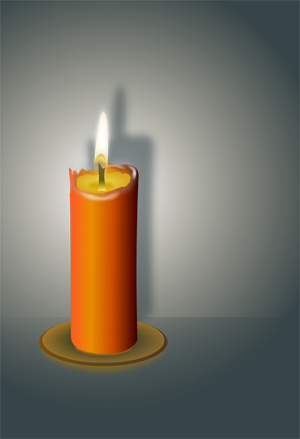
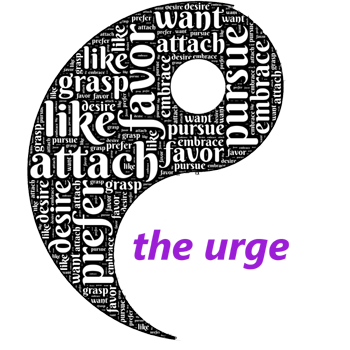

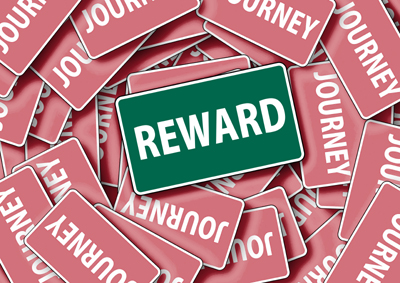
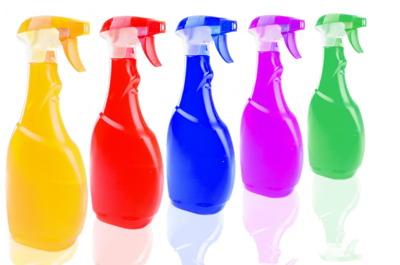 Picture a nice hot summer day at the beach with friends. Someone hands out a pretty, colored spray bottle filled with water to each person. In a playful crowd, it will take little time for someone to get a playful desire (the urge) to depress the lever of the spray bottle (the action) which would result in an expulsion of water on our friends (the reward). On a hot, sunny day, this would be harmless and probably welcome.
Picture a nice hot summer day at the beach with friends. Someone hands out a pretty, colored spray bottle filled with water to each person. In a playful crowd, it will take little time for someone to get a playful desire (the urge) to depress the lever of the spray bottle (the action) which would result in an expulsion of water on our friends (the reward). On a hot, sunny day, this would be harmless and probably welcome.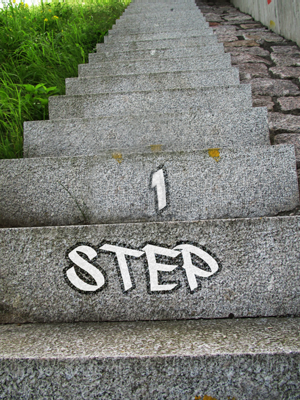 One of the mistakes we all make, at one time or other, is that we decide to take action to wrench something or many things out of our lives. We actually sit around dreaming about being a different being devoid of the habits that are causing us discomfort.
One of the mistakes we all make, at one time or other, is that we decide to take action to wrench something or many things out of our lives. We actually sit around dreaming about being a different being devoid of the habits that are causing us discomfort.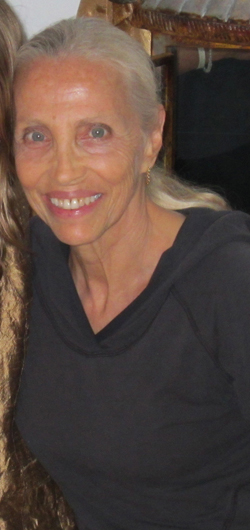 AT PEACE WITH DIANE GOLD
AT PEACE WITH DIANE GOLD 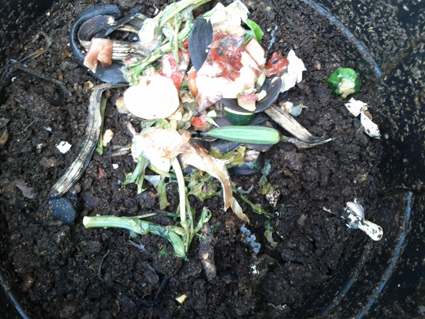 Composting, how and why discusses how easy it is for us to replenish the soil using our raw kitchen waste and why it benefits us to do it.
Composting, how and why discusses how easy it is for us to replenish the soil using our raw kitchen waste and why it benefits us to do it.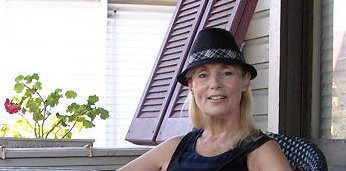
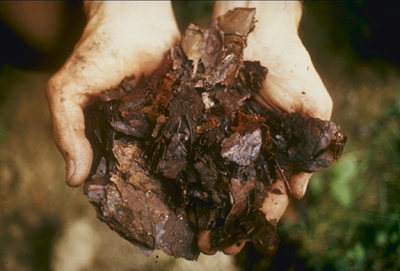
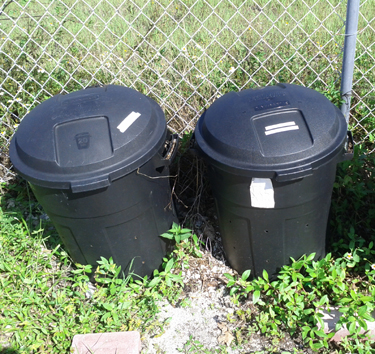
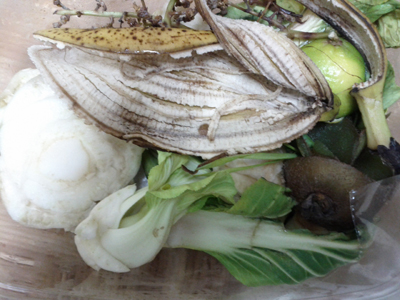
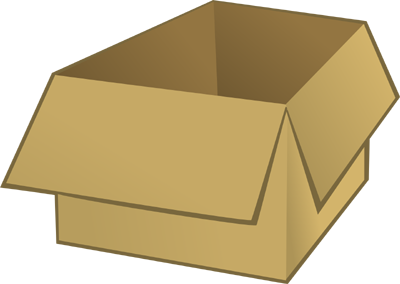
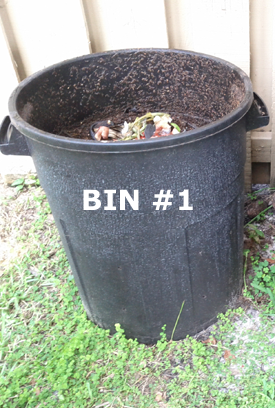
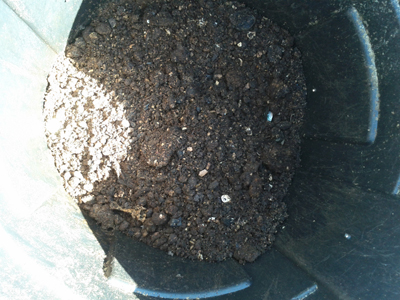
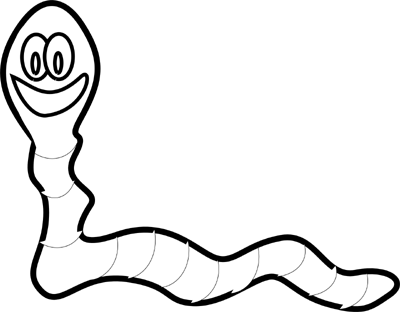
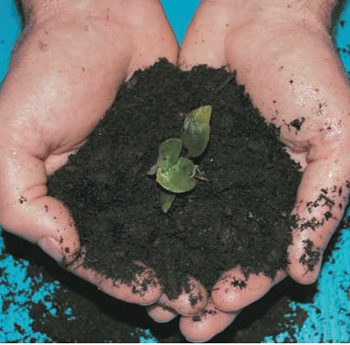
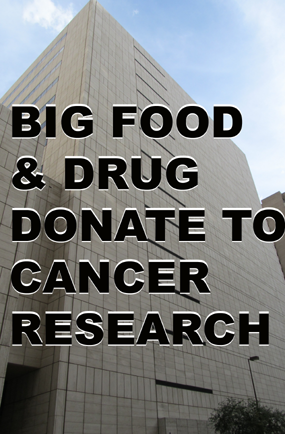 It’s no surprise that big food and drug donations to cancer research are common. In fact, it might be fair to say that a hefty chunk of annual fundraising revenue comes from this. Why? Well, think about this. If I give you a million dollars a year to live because I believe in your cause, you will be careful not to enrage me, if you want me to continue giving you a million dollars. In the same way, big food gives money to organizations who, in turn, go out of their way not to anger their donors.
It’s no surprise that big food and drug donations to cancer research are common. In fact, it might be fair to say that a hefty chunk of annual fundraising revenue comes from this. Why? Well, think about this. If I give you a million dollars a year to live because I believe in your cause, you will be careful not to enrage me, if you want me to continue giving you a million dollars. In the same way, big food gives money to organizations who, in turn, go out of their way not to anger their donors.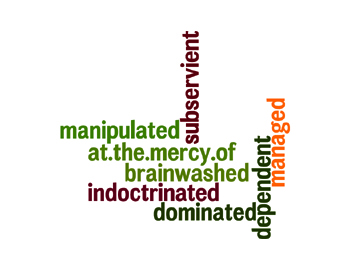 Having done food and label research since 1971, I know this to be true. We are at the mercy of companies that do not disclose scientific truth about their ingredients so that they can manipulate people into thinking the ingredient is harmless. They don’t label carcinogens, animal products, what’s in the natural or genetically modified products YET. Most of us are too busy to research these things themselves so depend upon transparency which is not.
Having done food and label research since 1971, I know this to be true. We are at the mercy of companies that do not disclose scientific truth about their ingredients so that they can manipulate people into thinking the ingredient is harmless. They don’t label carcinogens, animal products, what’s in the natural or genetically modified products YET. Most of us are too busy to research these things themselves so depend upon transparency which is not.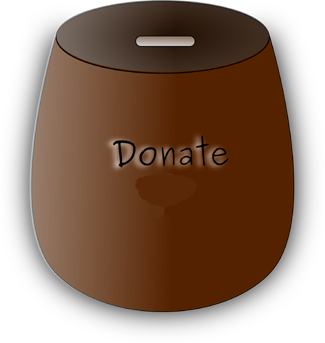
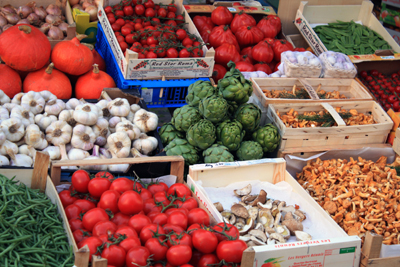 Why is nutrition research left out of grant allocations? Follow the money. There is no way to make money if a company discovers that turmeric can alleviate cancer. There is no way a pharmaceutical company can make a drug from maca root. So the study money goes to the companies who gratefully take it in to research mechanisms that can outcome a hugely profitable product.
Why is nutrition research left out of grant allocations? Follow the money. There is no way to make money if a company discovers that turmeric can alleviate cancer. There is no way a pharmaceutical company can make a drug from maca root. So the study money goes to the companies who gratefully take it in to research mechanisms that can outcome a hugely profitable product.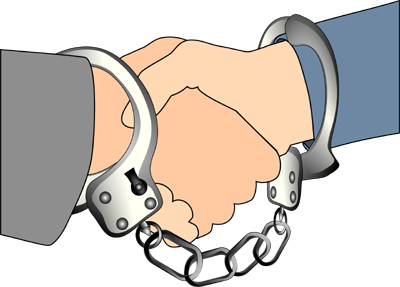 Most of all, we trust the organizations that hand out millions of dollars to research to have our best interest in mind. We don’t question that their hands are tied from speaking about the evidence against their donors. We don’t question why the research that meat and dairy cause cancer is not pursued heavily. We don’t question that so much research money goes to screening disease rather than to educating students and consumers to prevent disease in the first place through good nutrition. We look at organizations one at a time, so we don’t see that every powerful entity is donating money to push a power agendas.
Most of all, we trust the organizations that hand out millions of dollars to research to have our best interest in mind. We don’t question that their hands are tied from speaking about the evidence against their donors. We don’t question why the research that meat and dairy cause cancer is not pursued heavily. We don’t question that so much research money goes to screening disease rather than to educating students and consumers to prevent disease in the first place through good nutrition. We look at organizations one at a time, so we don’t see that every powerful entity is donating money to push a power agendas.
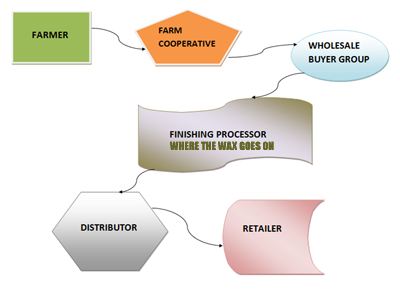 What’s on your produce is a huge question for many of us, especially if we are brought up believing what we see on our fruits and vegetables. For those of us who know full well that we are eating pesticides and wax, there are still surprises. For many, we are not aware of any of the standard ways the fruit and vegetable supply chain works. We are also confused about why organic food matters and what all this talk has to do with our health.
What’s on your produce is a huge question for many of us, especially if we are brought up believing what we see on our fruits and vegetables. For those of us who know full well that we are eating pesticides and wax, there are still surprises. For many, we are not aware of any of the standard ways the fruit and vegetable supply chain works. We are also confused about why organic food matters and what all this talk has to do with our health.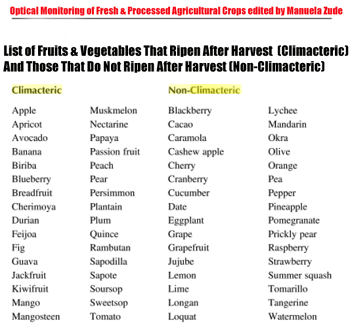 Fruits and vegetables produce a ripening hormone called ethylene. Plants are categorized into two categories: those that ripen after harvest (climacteric species), such as avocados or peaches, and those that do not like oranges or spinach (non-climacteric plants). The ripening process produces a hormone called ethylene, commonly known, not surprisingly, as the ripening hormone. All plants off-gas this substance, but some (the climacteric plants) produce more.
Fruits and vegetables produce a ripening hormone called ethylene. Plants are categorized into two categories: those that ripen after harvest (climacteric species), such as avocados or peaches, and those that do not like oranges or spinach (non-climacteric plants). The ripening process produces a hormone called ethylene, commonly known, not surprisingly, as the ripening hormone. All plants off-gas this substance, but some (the climacteric plants) produce more.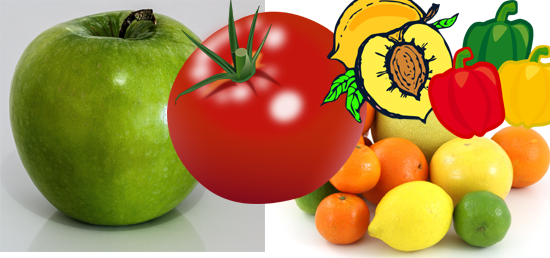 So, when a fruit or vegetable is harvested, it goes through a cycle of maturation, or ripening, and then begins senescence, which is its final stage of life. We might wonder about this wax and its safety, but we should be aware that it exists.
So, when a fruit or vegetable is harvested, it goes through a cycle of maturation, or ripening, and then begins senescence, which is its final stage of life. We might wonder about this wax and its safety, but we should be aware that it exists.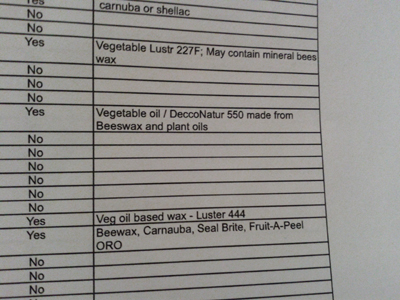
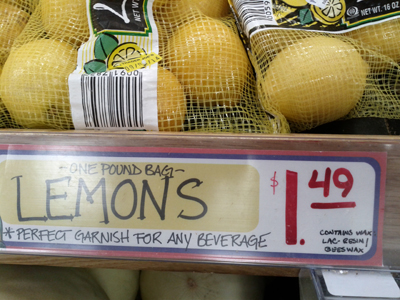
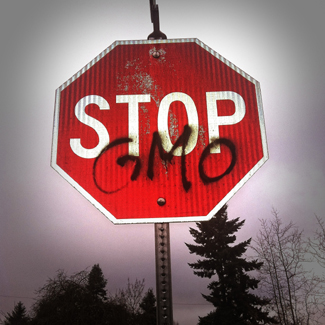
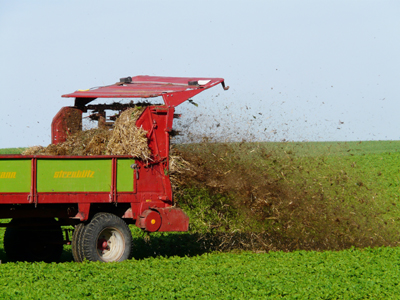 So, there are toxic chemicals being off-gassed from the fertilizer industry which is used on fruits and vegetables that don’t call themselves organic. There’s lots of methane from using cow waste in the soil and from cow waste that sits stagnantly.
So, there are toxic chemicals being off-gassed from the fertilizer industry which is used on fruits and vegetables that don’t call themselves organic. There’s lots of methane from using cow waste in the soil and from cow waste that sits stagnantly.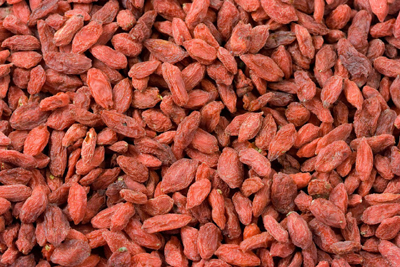 To find out what’s on my produce and your produce is very much a maze. If we are not professional growers, we don’t actually know about many of the items mentioned above. To find out the information is usually no one’s job but our own.
To find out what’s on my produce and your produce is very much a maze. If we are not professional growers, we don’t actually know about many of the items mentioned above. To find out the information is usually no one’s job but our own. If you buy at a local large store, go to the produce department and ask what kind of wax is on your favorite fruits and vegetables. Be persistent since the grocer, most likely, will not know and will say she has no way to find out that information. To cut the process down for you, get the phone number to the store’s regional warehouse. There, ask for the produce buyer. This will start the process of someone’s doing some research for you.
If you buy at a local large store, go to the produce department and ask what kind of wax is on your favorite fruits and vegetables. Be persistent since the grocer, most likely, will not know and will say she has no way to find out that information. To cut the process down for you, get the phone number to the store’s regional warehouse. There, ask for the produce buyer. This will start the process of someone’s doing some research for you.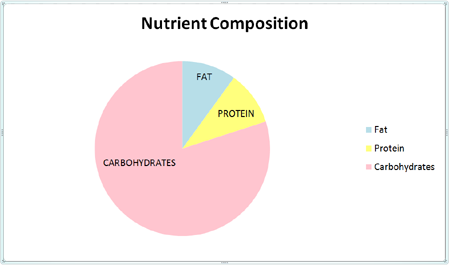 Nutrient composition, as per T. Colin Campbell, is far more important than looking at the amount of one nutrient quantity alone. The amount of calories we ingest is not as important as what type of calorie we take in.
Nutrient composition, as per T. Colin Campbell, is far more important than looking at the amount of one nutrient quantity alone. The amount of calories we ingest is not as important as what type of calorie we take in.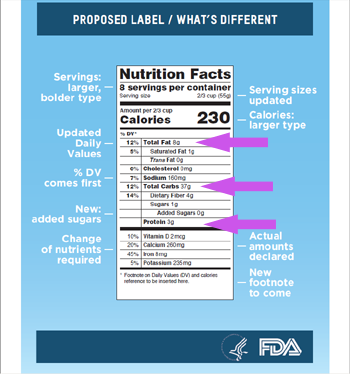
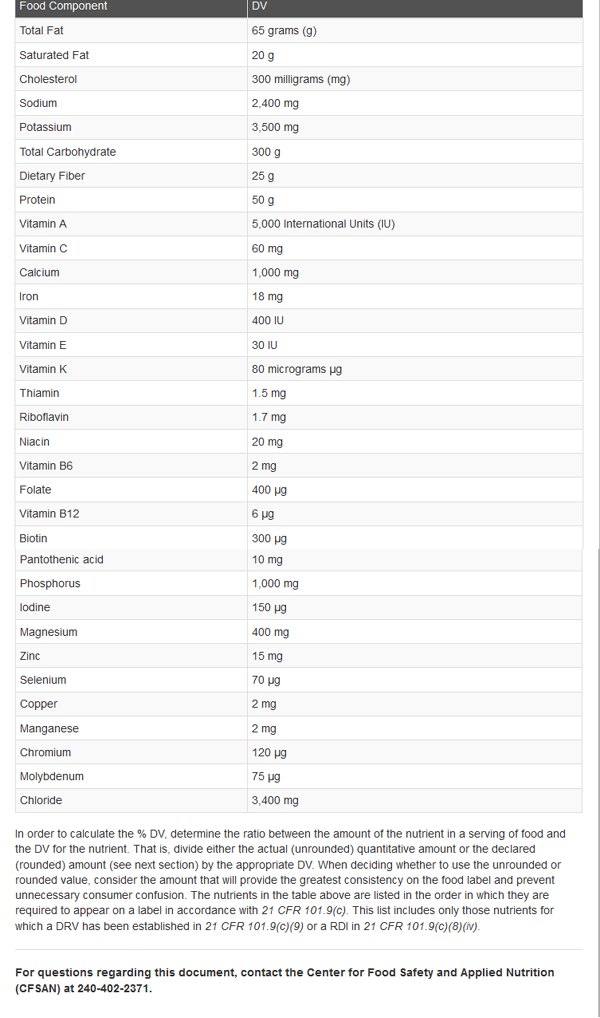
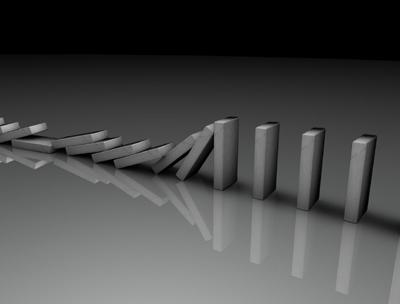 The following factors can change the amount of a macronutrient (like a carb), a micronutrient (like vitamin A), a macromineral (like calcium), a micromineral (like copper), a phytochemical (like quercetin) that we need on a particular day. When just 1 change occurs in our lives, the body goes through the domino effect, where every system’s connection to every other system in the grand infrastructure we call the human body is affected.
The following factors can change the amount of a macronutrient (like a carb), a micronutrient (like vitamin A), a macromineral (like calcium), a micromineral (like copper), a phytochemical (like quercetin) that we need on a particular day. When just 1 change occurs in our lives, the body goes through the domino effect, where every system’s connection to every other system in the grand infrastructure we call the human body is affected.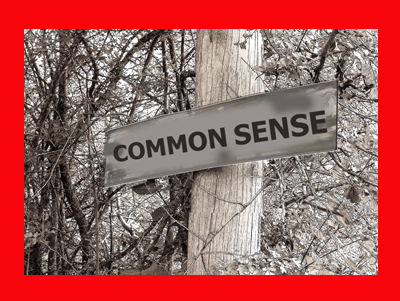
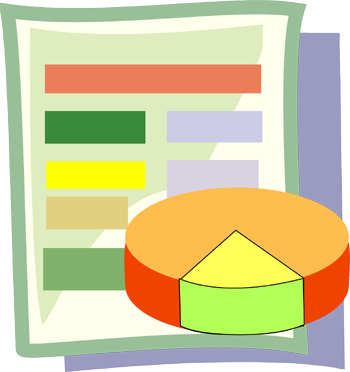
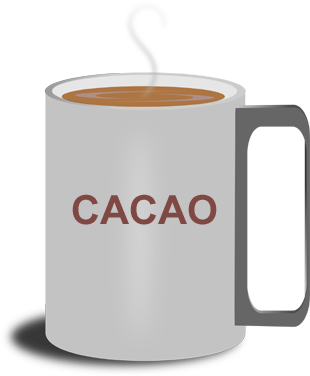 Cacao can improve your health in, oh, so many ways. Because of its positive effects, it has been used as a drink since between 1100 and 1400 B.C.E., according to a pottery residue discovery at Puerto Escondido in Honduras, written up in Fall, 2001, by Cornell U. Anthropologist John S. Henderson and UC-Berkeley Professor, Rosemary A. Joyce,
Cacao can improve your health in, oh, so many ways. Because of its positive effects, it has been used as a drink since between 1100 and 1400 B.C.E., according to a pottery residue discovery at Puerto Escondido in Honduras, written up in Fall, 2001, by Cornell U. Anthropologist John S. Henderson and UC-Berkeley Professor, Rosemary A. Joyce,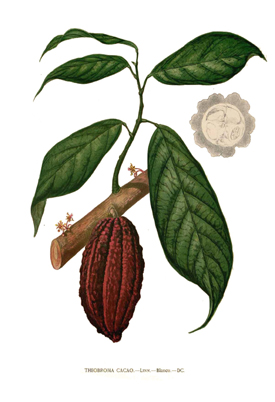 Magnesium balances brain chemistry, builds strong bones and helps normalize heartbeat and blood pressure. According to the nutritional facts of Sunfood’s cacao powder product, which I use every day, 1 tablespoon of certified organic cacao powder has 17.5% of our daily magnesium recommended intake (17.5% would be 56 mg for an adult older woman, which only fluctuates a little for younger adult women and is about 25% higher for men).
Magnesium balances brain chemistry, builds strong bones and helps normalize heartbeat and blood pressure. According to the nutritional facts of Sunfood’s cacao powder product, which I use every day, 1 tablespoon of certified organic cacao powder has 17.5% of our daily magnesium recommended intake (17.5% would be 56 mg for an adult older woman, which only fluctuates a little for younger adult women and is about 25% higher for men).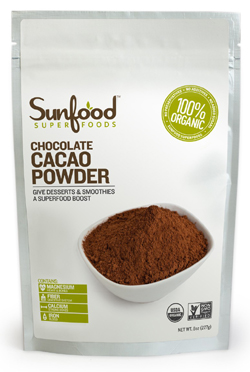
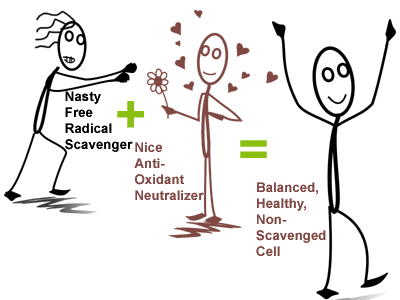
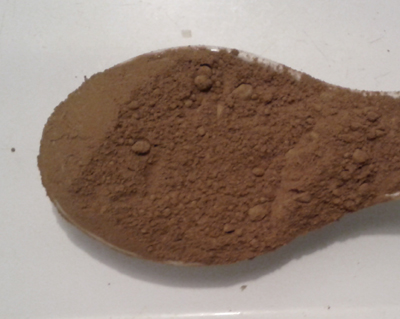 The smell of organic cacao powder is wonderful, only topped by organic maca powder. I think it’s pretty incredible that the most amazing smelling plants I have encountered so far has history together. The people on the bottom of the Andes Mountains (in the Tierra Caliente, mountain zone 1) used to trade with the people at the near top of the Andes (in the Tierra Fria Zone): cacao for maca and maca for cacao. (This is called vertical trading which provides for all 4 Andean mountain zones.)
The smell of organic cacao powder is wonderful, only topped by organic maca powder. I think it’s pretty incredible that the most amazing smelling plants I have encountered so far has history together. The people on the bottom of the Andes Mountains (in the Tierra Caliente, mountain zone 1) used to trade with the people at the near top of the Andes (in the Tierra Fria Zone): cacao for maca and maca for cacao. (This is called vertical trading which provides for all 4 Andean mountain zones.)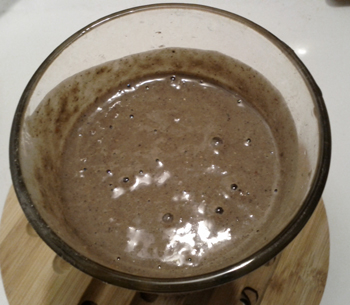 Who knew about cacao? It’s taken me almost 65 years to make cacao part of my daily routine. Until now, I have not really known how spectacular it is for me. It can have caffeine content (which is, at least, 1/20th as much as a cup of coffee) that does not affect me (or others) the way it does in coffee or tea.
Who knew about cacao? It’s taken me almost 65 years to make cacao part of my daily routine. Until now, I have not really known how spectacular it is for me. It can have caffeine content (which is, at least, 1/20th as much as a cup of coffee) that does not affect me (or others) the way it does in coffee or tea.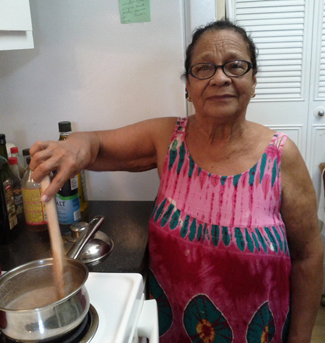
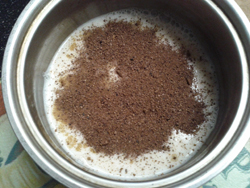
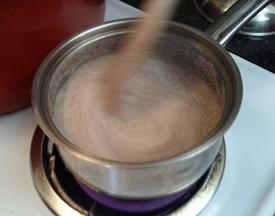
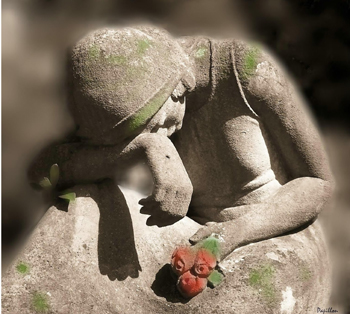 Recognizing 9 early warning signs of depression may sound like a thoughtless, insensitive question, uttered by someone who does not understand or is not experiencing depression. Let’s just say immediately that it takes extreme courage and focus to see ourselves, in general, and to see what is happening to us, in specific, while it is happening.
Recognizing 9 early warning signs of depression may sound like a thoughtless, insensitive question, uttered by someone who does not understand or is not experiencing depression. Let’s just say immediately that it takes extreme courage and focus to see ourselves, in general, and to see what is happening to us, in specific, while it is happening. When we are in a depression, we are not looking at it because we are busy experiencing it. We can think of living in a valley (a depression in the land) in much the same way. We are not looking at our lives from the perspective of mountain dwellers since we don’t live in the upland. Our perspective is from the point where we are, living in the lowlands, the valley.
When we are in a depression, we are not looking at it because we are busy experiencing it. We can think of living in a valley (a depression in the land) in much the same way. We are not looking at our lives from the perspective of mountain dwellers since we don’t live in the upland. Our perspective is from the point where we are, living in the lowlands, the valley.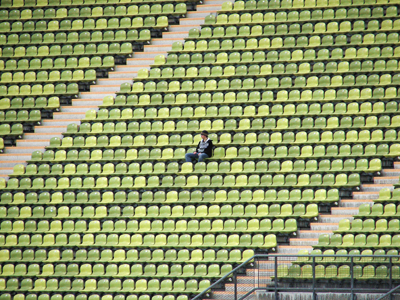 Little by little, we might see that we are spending more time at home, missing a little work here and there, having difficulty getting dressed to go out to socialize, going to lonely places. As with all actions, when we repeat them, they become more comfortable to do again. Kind of like tying a shoe or brushing our teeth.
Little by little, we might see that we are spending more time at home, missing a little work here and there, having difficulty getting dressed to go out to socialize, going to lonely places. As with all actions, when we repeat them, they become more comfortable to do again. Kind of like tying a shoe or brushing our teeth. We may be comedians, making everybody laugh – which increases the lifespan of every laugher, and still be sad. It is, after all a great burden, to be the one commissioned to make everyone laugh. Much like the model or the beautiful actor is expected to be as perfect on camera as off, in case a photo is snapped at an off hour; so the comedian is expected to have a 24/7 smile. We may be parents with kids who sometimes hide our feelings so that we don’t burden the family with our doom.
We may be comedians, making everybody laugh – which increases the lifespan of every laugher, and still be sad. It is, after all a great burden, to be the one commissioned to make everyone laugh. Much like the model or the beautiful actor is expected to be as perfect on camera as off, in case a photo is snapped at an off hour; so the comedian is expected to have a 24/7 smile. We may be parents with kids who sometimes hide our feelings so that we don’t burden the family with our doom.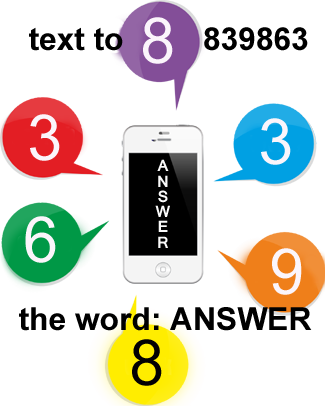
 Think of a one-inch square made up of 72 red squares, kind of like a crossword puzzle. And every day, for the next 72 days, one of those red squares turns light red. All of a sudden, in 72 days, the entire square is light red, and we may not have noticed it. That’s the subtle change.
Think of a one-inch square made up of 72 red squares, kind of like a crossword puzzle. And every day, for the next 72 days, one of those red squares turns light red. All of a sudden, in 72 days, the entire square is light red, and we may not have noticed it. That’s the subtle change. Since most of us will not reach out when we are in dire straits, because we are too depressed to do so, decide to be on the lookout on behalf of others. All of us have the responsibility.
Since most of us will not reach out when we are in dire straits, because we are too depressed to do so, decide to be on the lookout on behalf of others. All of us have the responsibility. 4) RUN TO THE LOCAL STORE OR CAFE TO HAVE HUMAN CONTACT
4) RUN TO THE LOCAL STORE OR CAFE TO HAVE HUMAN CONTACT





